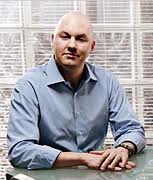Reader's note: this is somewhat long post.
The slaughter of young children, educators, and administrators in a Connecticut elementary school has shocked the world. However, anyone who has visited an American school becomes very quickly aware of the potential for violent activity, typically from someone associated in some way with the institution, its staff, or its students. The location of the schools does not change the concern over violence. It's very difficult to "casually" enter any American school, one reason why I wondered how the murderer in the Connecticut elementary school was able to get inside the building. (One notable aspect of this case is that some facts have shifted as law enforcement has gathered and released to the public more evidence and testimony.)
As a sales representative for a book publisher, I was always conscious of a school's visible security arrangements. I routinely had to present my driver's license, with the information dutifully recorded in some sort of book or electronic storage system. Some schools took my photograph and kept it on file. I have visited schools where metal detectors and security guards were just inside the institution's front doors. I have experienced a lockdown. One high school -- not in a big city, by the way -- had two layers of security to screen visitors.
Schools have to consider that violent activity can also occur within a school building. I knew this from my early teen years, when I had just moved to New York. We lived across the street from a middle school. One day, I saw someone throw a desk out a second story window. Did anyone say "Welcome to the neighborhood"? There were other issues inside school buildings, typically disputes between students in which weapons, such as knives, were used. Those issues sometimes found settlement in adjacent playgrounds, on the street, or on transportation.
As a sales rep visiting a school building, I always kept my eyes open. Classroom doors were locked for a reason; hall monitors kept a wary eye on students. However, I found the scariest place in school visits was the parking lot, where security could easily evaporate and trouble could just as easily, and suddenly, emerge. I didn't linger there, unless I felt confident the coast was clear.
I was a teacher of adults for a number of years. I've had two episodes involving violence. One came from a student, the other from a total stranger.
The episode with a student took place at a storefront English program in Queens. The man was drunk and upset about something unrelated to me or any class activity. In his muddled state, he walked toward me, confronted me, and threatened to beat the shit out of me. I knew this man had some martial arts training, and I do not have any self-defense skills except my wits. Fortunately, two students intervened and got the man out of the room. He never returned.
The incident with the stranger occurred while I taught for a non-sectarian ESL program housed in New York's Riverside Church. The building had security, but it wasn't challenging for a committed perpetrator to evade the guard station. At the time, I taught a class of approximately 25 adults from a variety of nations and experiences. As recent arrivals to the United States, their awareness of everyday American life, New York-style, was just forming. We performed a number of role plays in class, the goal of which was to deepen the understanding of language in situational contexts. The classroom door was unlocked and open, befitting a house of worship.
I didn't realize a stranger had walked into the room until I saw some students' eyes look toward the door. The man wore a ski mask and some nondescript clothing. His pistol was aimed at my stomach. He said he wanted everyone's money. I told him he should talk to me, as the students didn't understand English, were on public assistance, or had no money. I told him I had money and he should take it.
At first, the students thought this was a role play I had cleverly created with an associate. However, as the moments ticked away, I could sense a change in the room. Many of the students, who had come from very unforgiving circumstances, were beginning to realize the gun was not for language learning purposes. I didn't know what the perpetrator would do. Would he be satisfied with my statements? Would he lash out in anger at me? At the students? Was robbery his only motive? Meanwhile, I worried that one or more students would believe this was a role play they should participate in. Worse, would someone realize the gravity of the situation and physically or verbally attempt to intervene?
The perp took my wallet, asked again about students' money, and thankfully did not attempt to shake them down. He left the room and presumably escaped down the rear stairs, out a back door, and into Riverside Park.
I was deeply unnerved; I did not feel any strong desire to be "heroic." Yet, I immediately went to other classrooms and informed the teachers of the situation, as the entire school was potentially in danger. The office was notified; I stayed with my students. The police came and took cursory notes for their report. The next day, a small paragraph in the
New York Post reported the story. Since no newspaper reporter spoke with me or any school staff member, the story was possibly picked up from listening to NYPD communications.
When I considered the actions of teachers, administrators, and law enforcement in Newtown, I wondered what went through their minds in those seconds when the life or death of uncomprehending children depended upon the adults' judgement under fire (in some cases, literally so). For those who were murdered attempting to prevent a massacre, I can only profoundly admire their willingness to take a bullet (many bullets, in fact) in defense of the defenseless, and grieve that the forces of darkness extinguished their time on earth.









































